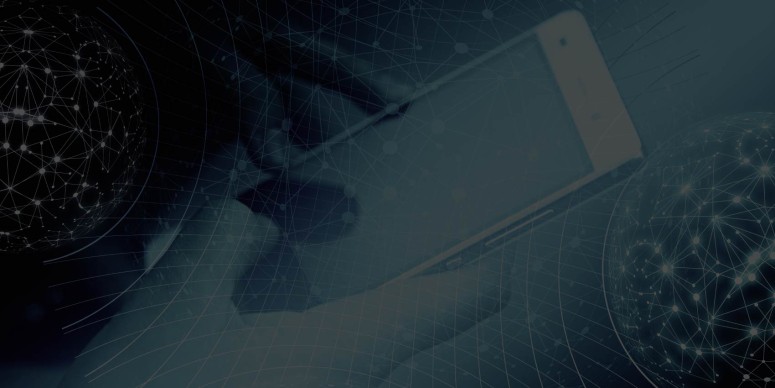Blog / Leadership & Transformation
TOP IoT Blockchain Projects
Categories

Today’s post contemplates the joint solution uses that top IoT blockchain projects have come up with. Read further to find out the areas that benefit the most of the integration.
After discussing the dynamic duo of AI and blockchain and all the projects they have paved the way for, now’s the turn of solutions that leverage IoT and Blockchain integration.
IoT comes with a myriad of use cases in different sectors, however, its wider application is caught sometimes behind security concerns over the data storage in the cloud or on the device itself. Might combining it with blockchain be the answer to all its woes? Yes, as the projects we will introduce today surely reflect. But they all come with their set of drawbacks that must be tackled along the way.
What can blockchain bring to the table for IoT?
To get started, we shall go over the characteristics of blockchain to define where it makes the biggest difference and could accelerate the adoption of IoT technologies.
Decentralization - The main benefit of using blockchain would be that no single authority would have control over the data generated by the IoT devices. That way, a distributed peer-to-peer network is born that permits the parties that don’t know or trust each other collaborate more smoothly. This type of network will also make it possible to unify siloed IoT devices and streamline the distribution of updates throughout the network.
Security - The current security architecture of IoT has its shortcomings. When the data is managed by a central authority, the system is more susceptible to a single point of failure. Blockchain’s unique security protocol -normally described as transparent and immutable- is a good solution to the largest issue of IoT development. Blockchains will store unalterable data history that can be consulted for each unique address. This lays the foundations of a platform that provides improved identification and authentication in IoT. The robust level of encryption that blockchain guarantees won’t let the hackers overwrite data records.
Transparency - Anyone with an authorization could track the transactions made on the network to follow up on what has happened in the past. This feature is useful to identify any leakage and take action.
Autonomy - Blockchain will reinforce the machine-to-machine economy that IoT is based on by offering a safe way to store information on different transactions. That way micropayments for services and data can be processed in a straightforward way. IoT devices that rely on blockchain can execute digital agreements automatically when the terms are met. Automating transactions between devices improves the machine-to-machine communication.
Reduced costs - Integrating blockchain to their processes would allow IoT companies to reduce costs. Eliminating the massive overhead costs related to IoT gateways will help them to reduce the strain on the company budget.
TOP IoT Blockchain projects
There are handful of IoT-blockchain players that have set the bar high for any new company looking to enter the market and take advantage of the integration of those two technologies. Below you can read more about top IoT blockchain projects who have been leveraging the advantages listed above:
VeChain
So, what is VeChain? VeChain is a blockchain-based enterprise solution designed to enhance supply chain management and other business processes. It is built on top of the VeChainThor public blockchain and has two tokens, VeChain Token (VET) and VeChainThor Energy (VTHO).
How does VeChain work? The Vechain platform is a combination of the IoT concept and blockchain technology. VeChain provides their customers with special in-house built smart chips implemented in QR codes, NFC and RFID tags that work as sensors and record information from their surroundings that is then uploaded to its blockchain. If someone would try to retag a product by ripping of one of their smart chips, the device would stop working.
What industries use VeChain This type of solution is a perfect fit for businesses suffering from counterfeiters such as fashion and luxury goods or other types of fraud such as the food industry.
How's the project evolving? Recently, we’ve read how this project tackling blockchain and IoT integration has been working closely with the Chinese natural gas giant Shanghai Gas (Group) Co, Ltd. to establish an “energy-as-a-service” ecosystem or that they have launched a new market-ready solution for food safety in the post-coronavirus world.
IOTA
What is IOTA? IOTA project uses a special distributed ledger to record and execute transactions between machines and devices. Its long-term intention is to become the standard model for conducting transactions on devices.
How does IOTA work? What makes it stand out among other projects on the list is its unique protocol, known as Tangle, that strictly speaking is not based on blockchain technology, but takes it to a whole new level. Instead of linear verification, the transactions are represented as vertices on a graph, which makes the process faster.
For what is it used? IOTA is announced as a secure, private, and feeless solution to keep track of all transactions made. This could be used for simplifying connected mobility, enabling smarter cities, or managing digital identity among others.
What’s the latest on IOTA? One of the most recent use cases of IOTA technology is that of monitoring water distribution in conflict zones and a company called com2m has been working on a smart pump prototype that makes use of Tangle. IOTA has also been recognized as a key innovator in the EU H2020 +CityxChange project and will receive research funding to explore its uses for creating a decentralized energy trading marketplace.
In Summary
As we have been able to observe in the case of these two examples above, the potential use cases of the blockchain and IoT together are very promising. Both VeChain and IOTA will continue to offer solutions to companies looking to add transparency and trust to their products.
Start your learning journey and get involved in the Blockchain Revolution!




